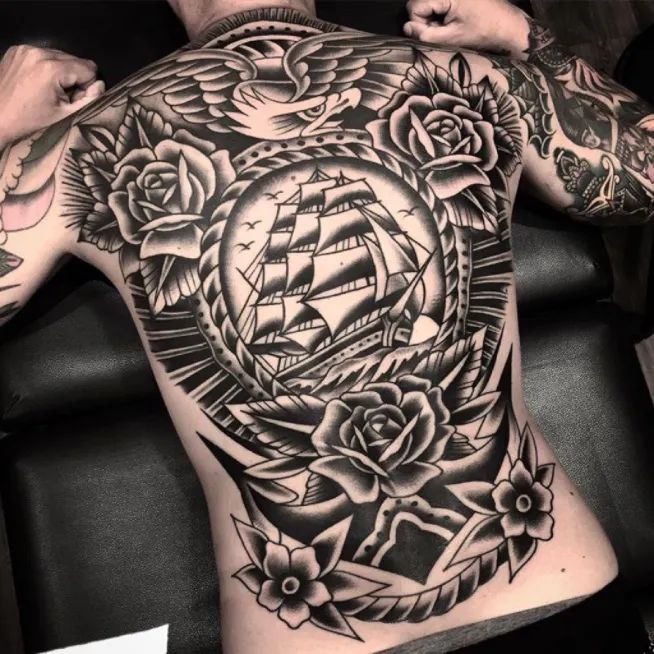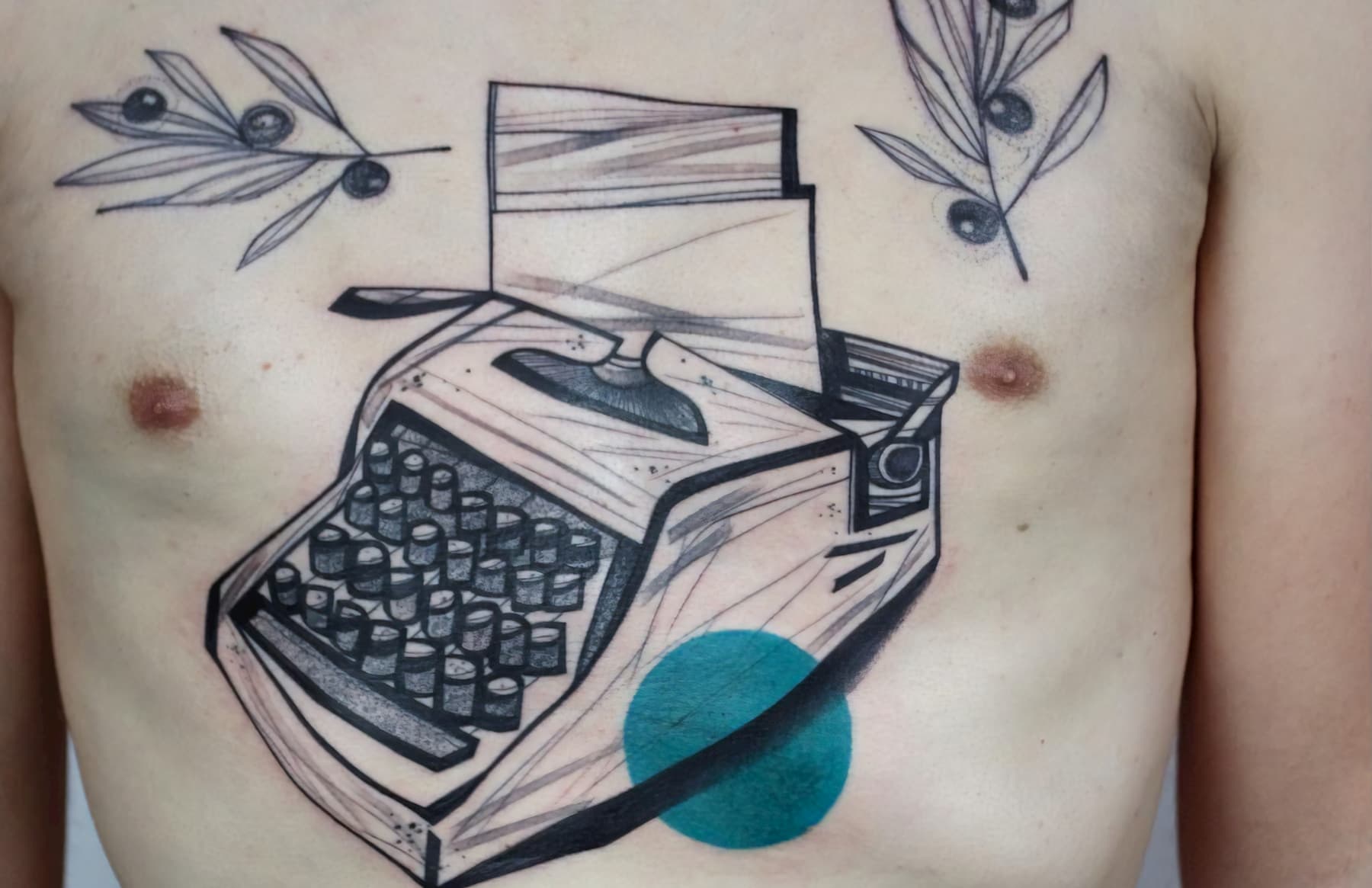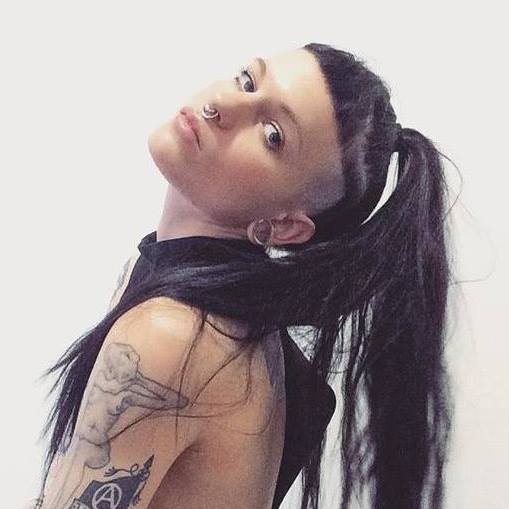
Illustrative Tattoos: History, Designs and Artists
- Мanagement
- Styles
- illustrative

In this article, we explore the history, styles, and artists of the illustrative tattoo style.
- There are many different styles and artistic movements that influence illustrative tattoos. Etching and engraving, sketch gestures, preliminary sketches of old master masterpieces, abstract expressionism, German expressionism, to name but a few.
- Techniques such as hatching, dot work, hatching, ink application modes vary for different textures or desired appearance, are also often used to varying degrees.
- In Illustrative Tattoo, you will find artists who are into Blackwork, Ornamental, Abstract, Traditional, Figurative, Japanese, Neo-Traditional, New School, Chicano and more.
- Aaron Aziel, Franco Maldonado, Lizo, Panta Choi, Maison Matemose, Miss Juliet, Chris Garver, Servadio, and Ayhan Karadag are all illustrative artists in one way or another.
- History of Illustrative Tattoos
- Styles and artists of illustrative tattoos
Immediately recognizable due to the quality of the lines and style, illustrative tattoos can easily be mistaken for simple skin drawings. With origins deep in human antiquity, from primitivism to modernism, we discover the history, styles and artists who used organic and diverse painting techniques to create their works.
History of Illustrative Tattoos
There are many different movements in the history of drawing that have perpetuated this technique at the forefront of fine art. However, because there are so many artists, techniques, and historical contexts that are part of the illustrative tattoo style, we've highlighted the most popular trends in this genre. We've included etching and engraving style, sketch-like gestures, Old Masters' preliminary sketches for masterpieces, Abstract Expressionism, German Expressionism, and more. There are also many different techniques used in the illustrative tattoo style. Dotted, dotwork, linework, shading… ink application methods vary depending on the texture or the desired look. We have tried to include many different ways artists work in this style, but with personal tastes and concepts in mind, the options are almost limitless!
The oldest rock art is about 40,000 years old. It seems that self-expression is as old as humanity, and while you might think these paintings would be simple, they are far from being the case. The bison paintings in Altamira Cave, dated circa 20,000 2011 years ago, are incredibly detailed and expressive. Showing the form of the animal in the abstract forms of cubism, they are eerily haunting in their modernity. The same can be said about the Chauvet Cave, about which a documentary film by Werner Herzog was filmed in 30,000. The Chauvet-Pont-d'Arc cave, located in the south of France, is one of the best-preserved examples of rock art dating from around XNUMX,XNUMX years ago. The movement, the quality of the lines, the layering of pigments are all some of the most beautiful examples of human illustration. And while it may seem far from an illustrative tattoo, the caves prove how intuitive and integral this style is to humanity.
Although the influence of rock art can be seen perhaps in Cubism, Abstract Expressionism and more, drawing was usually seen as a preliminary sketch, coinciding with architectural proposals, or in the process of planning a painting. However, even until now, some of them are still used by illustrators as inspiration for their works. Take, for example, Leonardo da Vinci's Vitruvian Man. A sketch he made at the end of the 15th century depicting the ideal proportions of a human as outlined by Vitruvius, an ancient Roman architect. Not only the image, but also the idea of sacred geometry is often used in illustrative work because of its origins and methods. Thus, while illustration often has expressive means, it can also help capture ideas and events, or even as a visual aid for advertising. Obviously, before the invention of the camera in 1816, people had no means of conveying or reproducing reality without the means of drawing, and therefore many styles developed throughout the world.
Styles and artists of illustrative tattoos
The etching and engraving style most commonly seen in blackwork is inherently part of an illustrative tattoo. Woodcuts are also considered to belong to this family. In most cases, illustrations of the intended finished product include drawings as an initial step in creating a detailed work. Odd Tattooist, Aaron Aziel and Franco Maldonado are some artists who often use this heavy line style in their work. Inspired by the work of Goya, Gustave Doré, or Albrecht Dürer, it can have a very surreal or dark look depending on the personal tastes of the tattoo artist. Artists prone to this style of illustrative tattoo typically use fine line needles in combination with drawing techniques such as cross hatching, parallel hatching, and sometimes small strokes. These special line styles are great for reproducing the texture of fur or the look of vintage etched or engraved prints.
Tattoo artists inspired by engraving and etching often fall into the Blackwork or Dark Art category. It's pretty clear why; the visual artists and masters of the past who influenced these works were often interested in esoteric philosophy, alchemy and magic. Symbols, demons, and mythical creatures can be depicted in many ways, but these artworks are usually heavily based on black or black and gray. Alexander Grim is a very good example of this. Some artists such as Derek Noble use color, but it is usually very deep tones such as blood red or bright orange. Some artists such as Christian Casas are inspired by the same concepts and tend to follow several different styles; Combining Dark Art and Neo Traditional, Casas still tends towards a very bold illustrative tattoo.
Another illustrative tattoo style is heavily influenced by German Expressionism, an aesthetic that dates back to before World War I and peaked in the 1920s. Perhaps one of the most influential artists of this era and movement is Egon Schiele, who died at the very young age of 28 in 1918. However, his portfolio has inspired many artists including Korean artists Nadia, Lizo and Panta Choi. . Perhaps part of the fine art replication trend that is currently hitting the tattoo community, the thin line is perfect for the expressive lines that artists like Schiele and Modigliani have. There are other tattoo artists inspired by this movement, especially artists like Ernst Ludwig Kirchner and Käthe Kollwitz who were known for their incredible prints. These tattoos often have thicker lines, but the designs still exude vigorous movement, just like thin line tattoos.
Of course, all artistic movements are incredibly diverse, but abstract expression, cubism and fauvism are closely related in terms of color, shape and form, but each of them has had its own influence on illustrative tattooing. Artists involved in these movements such as Picasso, Willem de Koonig and Cy Twombly created works that were very emotional and often very colorful. Using abstract forms, fast line movements, and sometimes words, bodies and faces, these artists and their movements continue to inspire collectors and artists alike. Aykhan Karadag, along with Carlo Armen and Jeff Seyferd, copied Picasso's paintings or mixed his bold and flamboyant style with their own. Parisian artist Maison Matemose is a highly abstract and illustrative tattoo artist, much like Korean artist Gong Greem, who uses bright colors and shapes like Kandinsky. Artists such as Servadio and Rita Salt also share a line of heavy quality drawn from the primitivist origins of expression and abstraction. Their work is usually figurative, but that's the beauty of illustrative work: it's always enhanced by the artist's personality and style.
Japanese and Chinese art have influenced visual arts throughout the world for centuries. Only in this category there are many different styles. Calligraphic lines often look graceful and spontaneous, but somehow perfectly depict the chosen subject. Tattoo artist Nadia leans into this style, using varying line weights and sketchy textures to create her work. Irezumi, of course, also had a huge impact on illustrative tattooing. These Japanese tattoos mostly drew their aesthetic from the ukiyo-e prints of the Edo period. Outlines, flat perspective, and the use of pattern are all characteristics commonly found in these prints. Even now, most Japanese designs have a smooth black outline, as if the tattoo artist had drawn a pen across the skin. Because of the use of pattern, and sometimes color, this outline is important. This makes the drawings clearer and holds the pigment. Illustrative techniques are usually used not only for beauty, there are reasons why tattoo artists work this way. With Japanese tattoos featuring chrysanthemums, beautifully intricate kimonos, or multiple dragon scales, making them easier with a wide outline. Some artists working in this vein of illustrative tattooing are Chris Garver, Henning Jorgensen, Ami James, Mike Rubendall, Sergei Buslaev, Lupo Horiokami, Rion, Brindi, Luca Ortiz, Dancin and Wendy Pham.
Immediately looking at Irezumi, you can see the influence of Neo Traditional, another type of illustrative tattoo. It is inspired not only by the same Ukiyo-e Irezumi prints, but also by Art Nouveau and Art Deco styles. In particular, the Art Nouveau style was heavily influenced by the Japanese use of nature as a concept, as well as graceful curved lines to outline frames, faces, and plants. Art Nouveau was more opulent and ornate than most of the Japanese crafts that inspired it, but you can see the fine use of pattern, filigree, and ornamentation in the work of tattoo artists Hannah Flowers, Miss Juliet, and Anthony Flemming. Some of these artists go beyond the illustrative tattoo style to look very picturesque, such as Aimee Cornwell, however you can still often see the spark of art nouveau artists. Some fine art masters such as Alphonse Mucha, Gustav Klimt and Aubrey Beardsley; many reproductions of their work were made in ink.
Neo-traditional is not the only illustrative tattoo style influenced by Irezumi and Ukiyo-e. Japanese animation, with a rich history of its own, has been widely recognized overseas through Western adaptations, dubs, and networks that have begun to use the anime for their own programming. Toonami, which first appeared as a daytime and evening block on Cartoon Network, has featured shows such as Dragon Ball Z, Sailor Moon, Outlaw Star, and Gundam Wing. It also happened thanks to the materialization of highly skilled animation studios like Studio Ghibli. Even now, many tattoo artists are asked to replicate characters from anime and manga, especially in the New School tattoo genre. Illustrative tattoo styles include not only Japanese comics, but also global comics and graphic novels. Marvel superheroes have become a recent craze, and since the 90s, Disney tattoos featuring favorite characters or scenes have always been on trend among collectors. It's easy to see why; tattoos are used for people to express what they love…anime, manga, comics, and Pixar tend to have some of the most passionate fans who love to paint their skin. Most anime and comics are first drawn… and while many movies and books are computer generated these days, lines are still used that indicate the illustrative style of the tattoo.
Another illustrative tattoo style is the Chicano. The main reason why much of the work in this genre is so illustrative has to do with its influence and origins. Given his roots in pencil and ballpoint drawing, it's no surprise that stylistically, the artwork combines these techniques with an incredibly rich cultural background. Although many people are familiar with the work of Frida Kahlo and Diego Rivera, other artists such as Jesus Helguera, Maria Izquierdo and David Alfaro Siqueiros have also been at the forefront of Mexican artistic creation. Their work, along with other South American artists, mainly focused on depicting political strife, family representations, and illustrations of everyday life. Later, modern stylistic approaches emerged that were directly influenced by life behind bars. Using the few materials they had in prison or in the barrios that dot the Los Angeles landscape, the artists drew inspiration directly from their own life experiences, just like their artistic predecessors. Scenes of gang life, beautiful women, sleek cars with filigree lettering and Catholic crosses quickly evolved from hand-drawn illustrations such as ballpoint pen embellished handkerchiefs and bed linen called Paños to iconic illustrative tattoos. The prisoners used sheer ingenuity to assemble a homemade tattoo machine and, using only the black or blue ink available to them, depict what they knew best. Chuco Moreno, Freddie Negrete, Chui Quintanar and Tamara Santibanez are at the forefront of modern Chicano tattooing.
As you can see, an illustrative tattoo includes many different styles, cultures, stories and concepts. The beauty of this genre of tattoo is that it simply represents the use of a line; if the tattoo looks like it could be drawn on a piece of paper instead of skin, it's probably an illustration. Of course, some tattoos are more illustration-based than others, but the variety of looks, the number of styles, the artist's ability is greater...everything about this particular style is inspiring and essential to the tattoo's art form.
JM
By Justin Morrow
Leave a Reply